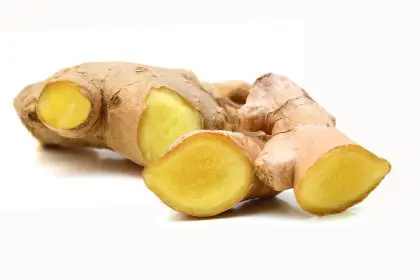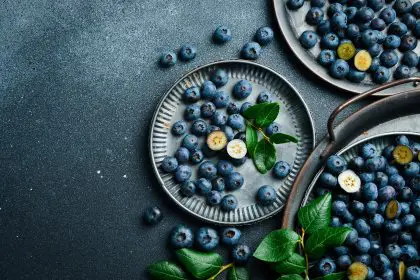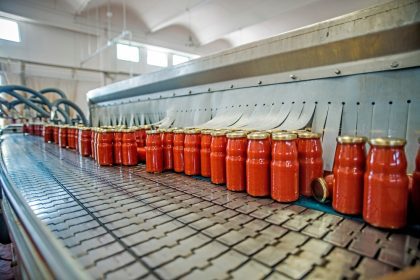The modern kitchen contains numerous ingredients that individually provide nutrition and flavor, yet certain combinations create unexpected chemical reactions that can poison the body. These dangerous food pairings often appear harmless, consisting of everyday ingredients found in most households. The toxic effects may develop slowly over time or manifest as acute reactions that require immediate medical attention.
Understanding which food combinations pose health risks empowers home cooks to avoid potentially dangerous meals while maintaining diverse, flavorful diets. Many toxic food interactions result from natural compounds that interfere with each other’s metabolism or create harmful byproducts when consumed together. The effects range from reduced nutrient absorption to serious poisoning that can cause organ damage or death.
The challenge lies in recognizing that foods considered healthy in isolation can become problematic when combined with specific other ingredients. Traditional cooking methods and cultural food pairings have evolved to avoid many of these dangerous combinations, but modern fusion cooking and processed food manufacturing sometimes ignore these time-tested principles, creating new opportunities for toxic interactions.
Alcohol and acetaminophen create liver destruction
The combination of alcoholic beverages with acetaminophen-containing medications creates a particularly dangerous interaction that can cause severe liver damage or death. This toxic pairing occurs when people take pain relievers while drinking alcohol or shortly after consuming alcoholic beverages. The liver metabolizes both substances using similar pathways, creating a competition that produces toxic byproducts.
Acetaminophen normally breaks down into harmless compounds through liver enzymes, but alcohol consumption depletes the glutathione needed for safe acetaminophen metabolism. When glutathione levels drop, acetaminophen forms a toxic metabolite called NAPQI that directly damages liver cells. This process can occur even with normal doses of acetaminophen when combined with alcohol consumption.
The danger extends beyond obvious scenarios like taking pain medication while drinking. Many over-the-counter cold and flu medications contain acetaminophen, and people may unknowingly create toxic combinations by taking these medications while consuming alcohol or shortly after drinking. Prescription medications containing acetaminophen pose similar risks when combined with alcohol.
Chronic alcohol users face particularly high risks from this combination because their liver enzyme systems are already altered by regular alcohol exposure. Even small amounts of acetaminophen can cause severe liver damage in individuals with chronic alcohol consumption patterns. The combination has caused numerous cases of acute liver failure requiring emergency transplantation.
Tyramine-rich foods with certain medications trigger crises
Foods containing high levels of tyramine can create life-threatening interactions when consumed by individuals taking monoamine oxidase inhibitor (MAOI) medications. This dangerous combination can cause sudden, severe increases in blood pressure that may lead to stroke, heart attack, or death. The reaction occurs because MAOIs prevent the normal breakdown of tyramine, allowing dangerous levels to accumulate in the bloodstream.
Aged cheeses represent one of the most concentrated sources of tyramine, with varieties like aged cheddar, blue cheese, and Parmesan containing particularly high levels. When individuals taking MAOI medications consume these cheeses, tyramine levels can spike rapidly, causing severe headaches, chest pain, rapid heartbeat, and dangerously elevated blood pressure.
Fermented and aged foods generally contain high tyramine levels, including aged meats, pickled foods, sauerkraut, and fermented soy products. Wine, beer, and other alcoholic beverages also contain significant amounts of tyramine, particularly those that have undergone fermentation processes. The longer the aging or fermentation process, the higher the tyramine content typically becomes.
The reaction can occur within minutes to hours of consuming tyramine-rich foods while taking MAOI medications. Early warning signs include severe headaches, neck stiffness, chest pain, rapid heartbeat, and nausea. These symptoms indicate a medical emergency requiring immediate treatment to prevent stroke or heart attack.
Calcium and iron create absorption interference
The simultaneous consumption of calcium-rich and iron-rich foods creates a problematic interaction that significantly reduces iron absorption in the digestive system. This combination poses particular risks for individuals with iron deficiency anemia or those at risk for developing iron deficiency, including pregnant women, children, and vegetarians.
Calcium directly competes with iron for absorption sites in the small intestine, with calcium taking precedence when both minerals are present simultaneously. This competition can reduce iron absorption by up to 60% when calcium and iron are consumed together in significant amounts. The effect occurs with both heme iron from meat sources and non-heme iron from plant foods.
Common food combinations that create this interference include cereal with milk, iron supplements taken with dairy products, and calcium-fortified orange juice consumed with iron-rich meals. Many people unknowingly create these problematic combinations by taking calcium and iron supplements together or consuming calcium-rich foods with iron-rich meals.
The absorption interference becomes particularly problematic for individuals already struggling with iron deficiency. The body’s ability to absorb iron naturally decreases with age, and the calcium-iron interaction can further compound absorption problems. This may lead to persistent iron deficiency despite adequate dietary iron intake.
Vitamin C and iron create oxidative stress
While vitamin C enhances iron absorption when consumed in moderate amounts, excessive vitamin C intake combined with high iron levels can create dangerous oxidative stress in the body. This combination promotes the formation of free radicals that damage cells, tissues, and organs throughout the body. The reaction occurs because vitamin C converts iron into its more reactive form, which then participates in harmful oxidation reactions.
Individuals with hereditary hemochromatosis face particular risks from this combination because their bodies already accumulate excessive iron levels. Adding high-dose vitamin C supplements to their diet can accelerate iron-induced organ damage, particularly affecting the liver, heart, and pancreas. The oxidative stress created by this combination can cause irreversible tissue damage.
The interaction becomes problematic when people take high-dose vitamin C supplements while consuming iron-rich foods or iron supplements. Many multivitamin formulations contain both nutrients in high concentrations, potentially creating conditions for oxidative stress. Vitamin C-fortified cereals consumed with iron-fortified foods can also create this dangerous combination.
Cooking acidic foods in iron cookware can create similar problems by increasing iron content while adding acid that enhances iron absorption. Tomato-based sauces cooked in cast iron pans represent a common example of this potentially harmful combination, particularly when consumed frequently over time.
Grapefruit and medications create toxic accumulation
Grapefruit contains compounds called furanocoumarins that significantly interfere with drug metabolism in the liver and intestines. These natural chemicals inhibit enzymes responsible for breaking down numerous medications, causing drug levels to accumulate to potentially toxic concentrations in the bloodstream. The interaction can persist for up to 72 hours after consuming grapefruit.
Blood pressure medications, particularly calcium channel blockers, create dangerous interactions with grapefruit consumption. The combination can cause blood pressure to drop to dangerously low levels, leading to dizziness, fainting, and potentially fatal cardiovascular events. Statin medications used to lower cholesterol also interact severely with grapefruit, increasing the risk of muscle damage and kidney problems.
The interaction affects both fresh grapefruit and grapefruit juice, with some processed grapefruit products containing even higher concentrations of interfering compounds. Even small amounts of grapefruit can create significant drug interactions in sensitive individuals. Other citrus fruits including Seville oranges and limes contain similar compounds that can cause drug interactions.
Many people remain unaware of grapefruit’s potential for drug interactions because the fruit is generally considered healthy. The delayed nature of many drug accumulation effects means that problems may not become apparent immediately, making the connection between grapefruit consumption and adverse effects less obvious.
Green leafy vegetables and blood thinners disrupt clotting
Foods high in vitamin K, particularly dark leafy greens like spinach, kale, and collard greens, can significantly interfere with warfarin and other blood-thinning medications. Vitamin K promotes blood clotting by supporting the production of clotting factors in the liver, directly opposing the effects of anticoagulant medications designed to prevent dangerous blood clots.
The interaction becomes problematic when individuals dramatically increase or decrease their consumption of vitamin K-rich foods while taking blood thinning medications. Sudden increases in leafy green consumption can reduce the effectiveness of anticoagulant therapy, increasing the risk of stroke, heart attack, and other clotting-related complications.
Conversely, suddenly eliminating vitamin K-rich foods from the diet can enhance the effects of blood thinning medications to dangerous levels, increasing bleeding risks. This can lead to serious hemorrhages in the brain, digestive system, or other vital organs. The key lies in maintaining consistent vitamin K intake rather than avoiding these nutritious foods entirely.
Many individuals taking blood thinning medications receive inadequate education about dietary interactions, leading to dangerous fluctuations in anticoagulation levels. Holiday meals, seasonal dietary changes, and travel can all create situations where vitamin K intake varies significantly, affecting medication effectiveness and safety.
Potassium-rich foods and certain medications cause heart rhythm problems
High-potassium foods consumed by individuals taking ACE inhibitors, potassium-sparing diuretics, or certain other medications can create dangerous elevations in blood potassium levels. This condition, called hyperkalemia, can cause life-threatening heart rhythm abnormalities that may result in cardiac arrest without warning.
Bananas, oranges, potatoes, and tomatoes contain particularly high levels of potassium that can become problematic when combined with medications that increase potassium retention. Salt substitutes containing potassium chloride pose additional risks, as many people use these products liberally without realizing their high potassium content.
The combination becomes especially dangerous for individuals with kidney disease, as compromised kidney function reduces the body’s ability to eliminate excess potassium. Dehydration, illness, or other factors that affect kidney function can rapidly transform a normally safe potassium intake into a dangerous level when combined with potassium-retaining medications.
Early symptoms of hyperkalemia include muscle weakness, tingling sensations, and fatigue, but severe cases may progress directly to life-threatening heart rhythm abnormalities without warning. The subtle nature of early symptoms means many individuals remain unaware of dangerous potassium accumulation until serious complications develop.
Aged and fermented foods with histamine sensitivity create reactions
Individuals with histamine intolerance face significant risks when consuming aged, fermented, or processed foods that contain high levels of histamine or trigger histamine release. This combination can cause reactions ranging from mild discomfort to life-threatening anaphylaxis-like symptoms that require emergency medical treatment.
Aged cheeses, cured meats, fermented vegetables, and alcoholic beverages contain particularly high histamine levels that can trigger severe reactions in sensitive individuals. Wine, especially red wine, contains multiple compounds that both provide histamine and interfere with histamine breakdown, creating a perfect storm for adverse reactions.
The symptoms of histamine reactions can mimic allergic responses, including hives, difficulty breathing, rapid heartbeat, and digestive upset. Severe reactions may cause blood pressure drops, loss of consciousness, and respiratory failure that requires immediate emergency intervention. The delayed nature of some histamine reactions makes identifying trigger foods particularly challenging.
Many processed foods contain hidden sources of histamine or histamine-releasing compounds, making it difficult for sensitive individuals to avoid problematic combinations. Food additives, preservatives, and artificial colors can also trigger histamine release, creating additional layers of complexity in managing histamine intolerance.
Oxalate-rich foods and calcium create kidney stone formation
The combination of high-oxalate foods with calcium, particularly when consumed in large quantities, can promote the formation of kidney stones in susceptible individuals. Oxalates are natural compounds found in many healthy foods that can bind with calcium to form insoluble crystals that accumulate in the kidneys.
Spinach, rhubarb, beets, nuts, and chocolate contain particularly high levels of oxalates that become problematic when combined with calcium-rich foods or supplements. The timing and ratio of oxalate to calcium consumption influences whether protective or harmful effects occur, with certain combinations promoting stone formation while others may actually prevent it.
The interaction becomes complex because moderate calcium intake can actually help prevent kidney stones by binding oxalates in the digestive system before absorption. However, very high calcium intake, particularly from supplements, combined with high oxalate foods can overwhelm this protective mechanism and promote stone formation.
Individual susceptibility varies significantly, with some people able to consume high-oxalate foods without problems while others develop kidney stones from relatively modest intake. Genetic factors, hydration status, and overall diet composition all influence the likelihood of developing problematic oxalate-calcium interactions.
Prevention strategies for safe food combinations
Understanding dangerous food combinations enables individuals to make informed choices about meal planning and supplement use while maintaining nutritious, varied diets. The key lies in recognizing potentially problematic combinations and timing consumption appropriately rather than completely avoiding beneficial foods.
Spacing the consumption of interacting foods by several hours can often prevent adverse effects while allowing individuals to benefit from the nutritional value of both foods. For example, consuming calcium-rich and iron-rich foods at different meals maintains the benefits of both nutrients while avoiding absorption interference.
Working with healthcare providers to understand medication-food interactions becomes essential for individuals taking prescription drugs. Regular communication about dietary changes, supplement use, and any unusual symptoms helps identify potential interactions before they become dangerous.
Reading food labels and understanding ingredient lists helps identify hidden sources of problematic compounds. Many processed foods contain additives, preservatives, or concentrated forms of natural compounds that can create unexpected interactions when combined with other foods or medications.
Maintaining consistent dietary patterns helps minimize the risk of dangerous interactions while making it easier to identify problematic combinations when they occur. Gradual dietary changes allow the body to adapt while providing opportunities to monitor for adverse effects.
The recognition that common foods can create toxic combinations when improperly paired emphasizes the importance of informed food choices and careful attention to potential interactions. Understanding these relationships enables individuals to maintain healthy, diverse diets while avoiding dangerous combinations that could compromise their health or interfere with necessary medications.

















